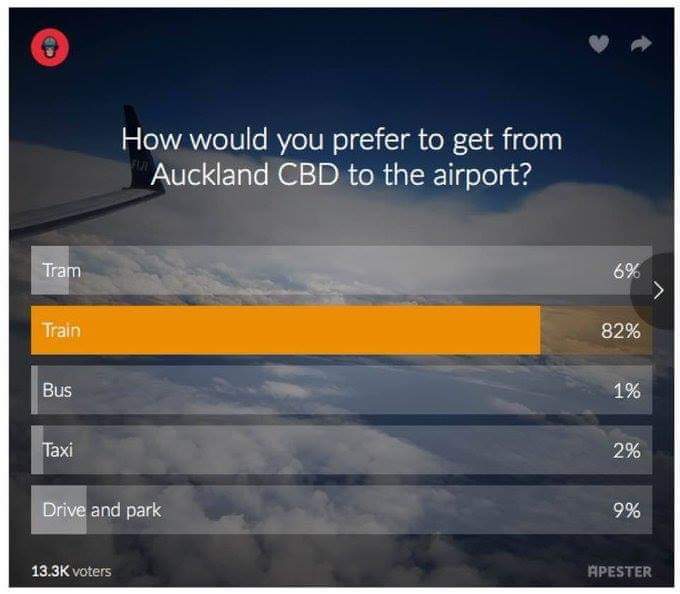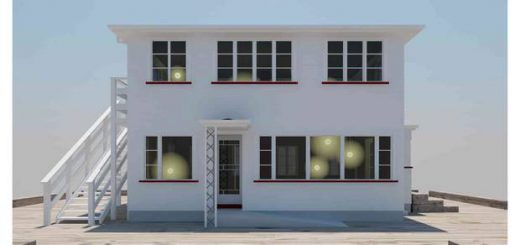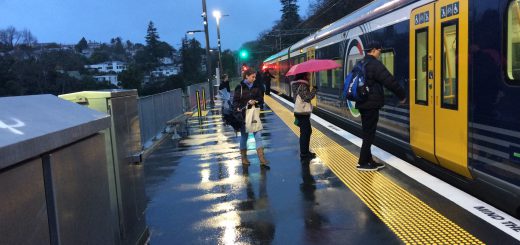Trams to Auckland airport – is this really a Super idea?
I was as intrigued as most when Transport Minister Phil Twyford announced the NZ Superannuation Fund’s interest in building, owning and operating the Minister’s favoured light rail project – costed provisionally at $6bn for two lines. As we know one of these will link Auckland International Airport with the central city via Dominion Road and the other will service the Minister’s Te Atatu electorate, eventually extending to Kumeu. One can only conclude that the Super Fund’s reported eagerness to invest in a public-private partnership (PPP) for this project means PPPs are as lucrative as their critics have long been saying – that is from the ‘private’ partner’s perspective. And it’s that role ironically, that the Crown-owned Super Fund is evidently planning for itself. ‘Privatise the profits – socialise the losses’ is the name of the game. But any profit must come at the expense of the ‘public’ partner. That’s us. The ratepayers, taxpayers, fuel tax-paying motorists and fare-paying passengers, in other words the people of Auckland – and New Zealand. But I thought the public were meant to be the beneficiaries of the NZ Superannuation Fund – not its fall guys. I trust the government is getting good advice on this proposal because the worry is that when it comes to choice of rail mode to the airport, it clearly doesn’t have good advice at all. Opting for widely criticised light rail (trams) instead of heavy rail (trains) to the airport is a very high-risk call; one taken on dubious technical advice and without a business case. It also out of line with international best practice.

NZ Herald Didgi-Poll Nov 2018
82% of those polled prefer trains to the airport while on 6% preferred trams.
Getting the NZ Super Fund to build it would mean the government doubling down on a deeply-flawed strategy. Leaving to one side the tramline to Te Atatu, let’s look once again at the pros and cons of light rail to the airport. To be fair, light rail has the benefit of being a versatile and efficient form of public transport. Modern trams can service busy inner city streets like buses, (‘street car’ mode), but can carry much more people (11,000 per hour) and in greater comfort than diesel buses (2500 per hour). Trams are great people movers, based on frequent stops, usually conveniently spaced at 350m to 800m apart. (Ideal for the inner city and waterfront). On the other hand electric trains (EMUs) can carry even more people (48,000 per hour) and go much faster than street-running trams. This is not just due to the superior power of EMUs, train stations tend to be spaced more widely apart, between one to three kilometres. The latest plan I have seen for a heavy rail connection from the airport via Puhinui to Britomart (journey time 30 minutes and costed at $750m) has it stopping at only two stations but providing cross platform connections to the rest of the suburban network – from Henderson to Pukekohe. In contrast the 22.8 km airport-Dominion Road-Britomart tramline will have 18 stops. It will be at very best 15 minutes slower than the train but due to traffic conditions much less predictable. From the user’s point of view (overlooked as always), weary international travellers, with their baggage, probably strap-hanging, through multiple tram stops to reach their central city hotels on a crowded tram would not be an ideal prospect. Even less so in the case of travellers, going the other way, anxious to get to the airport on time to make their flights.
When I visited Queensland’s Gold Coast a couple of years’ ago to inspect its brand new tramline, the managers emphasised to me one of their key ‘learnings’: light rail means ‘mass transit’ – not ‘rapid transit’. This is a fundamental point for ‘horses for courses’ mode decisions, one that both Minister Phil Twyford and Mayor Phil Goff worryingly still don’t understand.
So the key question, one that the cocksure politicians have overlooked in pushing their trophy project, is, will a slow tram journey between the central city and airport provide genuine competition to the private car and therefore combat growing traffic congestion? Because it is for this key reason, based on speed, capacity and predictability of journey time, that Melbourne which has biggest and most sophisticated light rail system in the world, will NOT be using trams for its airport connection but trains.
Phil Twyford proudly boasts his light rail scheme is ‘the biggest transport project in New Zealand’s history’, yet it will only service a comparative handful of Auckland suburbs. Is that really the smartest use of six billion dollars of public money?
One of the most worrying aspects of this decision, besides the lack of rigour and contestable advice backing it, is the remarkable unwillingness by both Minister and Mayor to even acknowledge, let alone learn from overseas experience. This will be a hugely expensive, technically challenging project. The stakes are high. If things go wrong the fallout will not only do lasting damage to the government, but could also financially cripple the ‘Super City’.
This article published in the June issues of Ponsonby News and The Hobson and also The Daily Blog.





Hi Mike,
I just read your published opinion on the above in the June Ponsonby News and felt incensed enough that I wanted you to know I couldn’t agree with you more on what you have written.
I have been back in NZ now for close to 4 years after being away for 22 having lived in HK, Japan and Dubai during which part of my mandate was to cover the Asia/Pacific region and thus spent time in Singapore, Taiwan, Malaysia, Australia, Korea and India. I also regularly visited the large cities of New York and London as part of my regular business trips. Part of living and spending time in these cities meant that I used the public transportation systems on a daily basis and based on that experience what you have said about the tram system to the airport is spot on.
In my experience a city to airport and vice versa transport system needs essentially 4 things: 1) be quick 2) reliable 3) safe 4) affordable. If you look at the HK airport express it takes just 23 minutes from Central (HK’s down town) to Chek Lap Kok Airport, every 12 minutes there is a train and since its inception in 2005 it probably has had two stoppages at most (I personally can’t recall any as it would’ve made the front page news of the South China Morning Post). The same applies to Japan’s Narita Express (Narita to Tokyo) and Rapito (Osaka (Kansai Airport) to Namba). On top of being reliable these airport express systems are extremely safe which is a plus for tourists and locals alike. They are also affordable and cheaper than taking a taxi from each city’s down town equivalent centre.
Without being privy to the AT meetings and notes, I am not sure the proposed tram system will meet the first 3) and possibly may struggle for the 4th. With a tram system running along the same routes as general transport i.e. cars, buses etc and then a proposed 18 stops how long are they wanting to make the ride take? 1 hour? 1 1/2 hours? At the moment by private car it takes me approx 25 minutes from Freemans Bay to the airport. I doubt whether I will want to take a tram if its going to take longer and I also do not have to deal with going to Britomart, wheeling my luggage to the tram and then having to lift it up 3 steps to get onto the tram (I have yet to see a tram system with a lifting luggage capability). The other thing that if they are going to mix general commuting with a supposed airport express how “express” will it ever possibly be? Hence that is why all the cities I have mentioned above have dedicated train services for the airport. As for reliability it is blindingly obvious – one bus or car crash on the tram lines and then what do you do? Safety is another issue. Today our trains are really only busy at peak times, what about the times when the trams are not so busy and there is only a single female tourist with some street kids on board (because they can board during one of the 18 commuter stops)? How do we manage that? (admittedly it could also happen with a train).
As for the Super Fund getting involved, you are on the money. Having dealt with a number SWF (sovereign wealth funds) they will do what is best for the fund even if that means Auckland Joe Public getting nailed. Phil Twiford mentioned their name to the newspapers only to give this project a level of legitimacy to the eyes of the public and hopefully get their buy in that if the Super Fund is going to invest in it it’s a good idea.
There is a lot more I could say but its the long weekend however I will end with this final comment that I find it interesting that the seemingly two primary drivers of this project Phil Goff and Phil Twyford have never actually lived overseas (if I am not mistaken) so how do they practically know what works and what doesn’t when it comes to mass transport such as this?
Thanks and best of luck!
Thanks Ken,
I completely agree with you. You raise an interesting question in regard to safety and security for travellers. But unlike a tram an airport train would have very limited stops. Ideally these stations would be gated and with train managers on board, whereas a tram will be open to even higher fare evasion and the anti-social behaviour that goes with it than we get on the trains (mainly because AT management stubbornly refuses to gate more than half a dozen out of 40 stations. I am going to keep on calling out this ‘group think’ official stupidity. Auckland – New Zealand – deserves better than this.
Thanks Ken,
we have been communicating by email but for the record thanks for this. I agree with your comments.